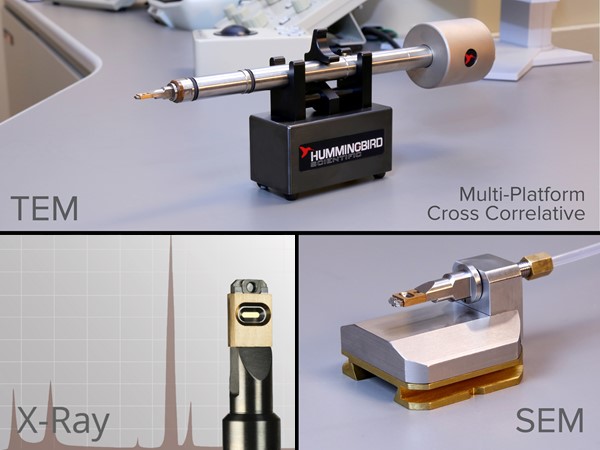Our liquid TEM holder’s unique removable holder tip allows for multi-modal correlative imaging of transmission electron, scanning electron, X-ray, and optical microscopy of samples in liquid environments. Dedicated holders are available for each technique. All holders can interface with the same liquid-cell tip allowing multi-modal correlative imaging.
Correlative imaging allows researchers to acquire data across different length scales. It also allows for the acquisition of complementary data: high-resolution internal microstructure with TEM and X-ray, surface topography with high magnification and high depth of field in SEM, and lower magnification screening with optical microscopy. And it supports the use of different spectroscopy techniques, including fluorescence, X-ray absorption spectroscopy, energy-dispersive X-ray spectroscopy (EDS), and electron energy loss spectroscopy (EELS).
Operando x-ray liquid-electrochemical microscopy reveals origin of Li charging and discharging of battery primary particles
Lithium iron phosphate (LiFePO4) battery material particles were charged and discharged in-situ while recording the special charge state using STXM (Scanning Transmission X-ray Microscopy) at LBL’s ALS and studied with TEM. This data showed that spatial heterogeneities in reaction rates account for domains with the charging process significantly less uniform than the discharging process. These results highlight the crucial role of surface reaction rate for lithiation, observing these inconsistencies of ion insertion have implications for electrode engineering and battery management for future generation battery technology.

Reference: William C. Chueh et al. Origin and hysteresis of lithium compositional spatiodynamics within battery primary particle. Science (2016). Abstract

